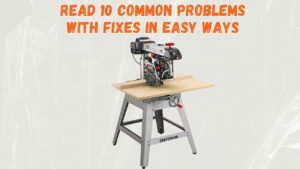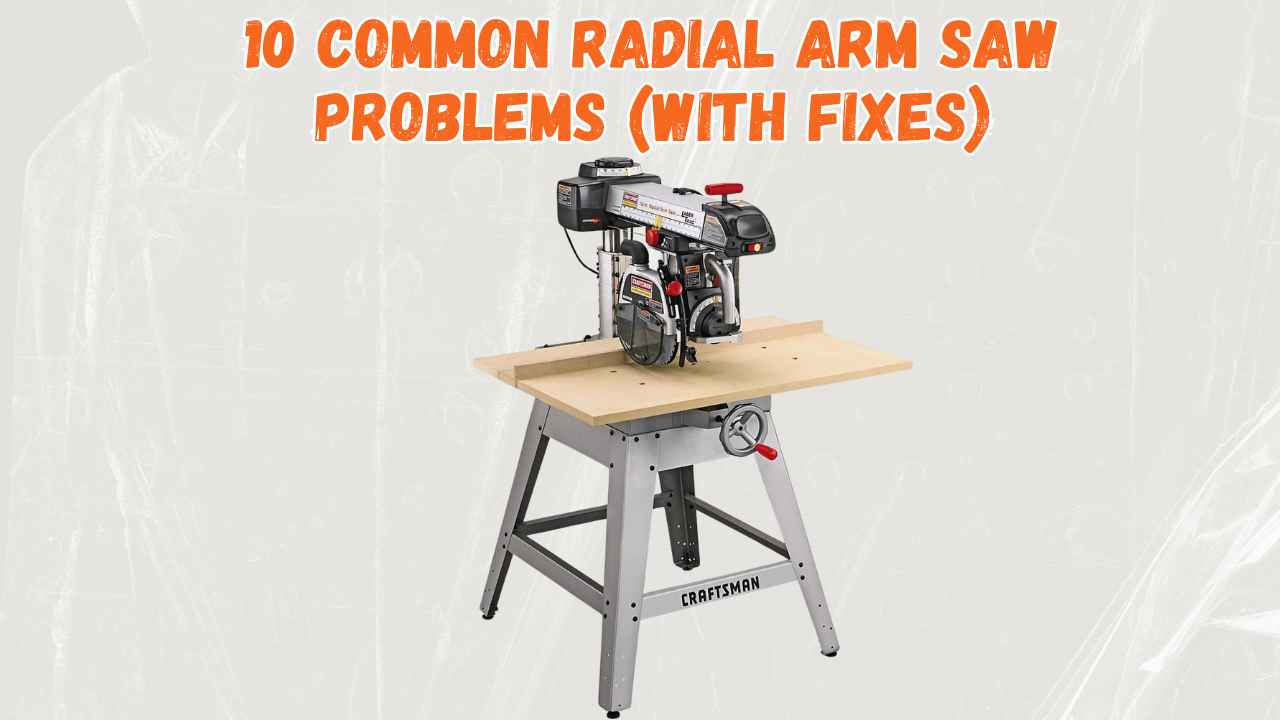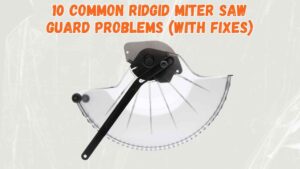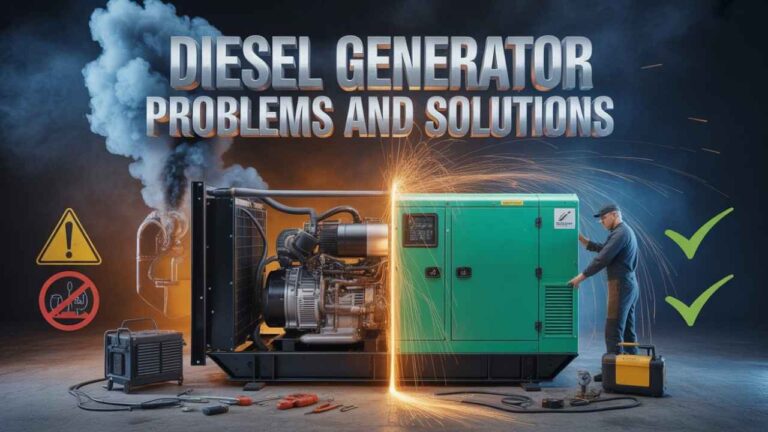Struggling with your radial arm saw? You’re not alone! These versatile tools can sometimes run into common issues that disrupt your work.
From alignment troubles to motor glitches, understanding these problems is key to keeping your saw in top shape.
In this guide, we’ll tackle 10 common radial arm saw problems and show you simple fixes to get back on track.
Radial Arm Saw Problems (Short Overview)
Radial arm saws can face common issues like misalignment, blade wobbling, or motor problems that impact performance.
To fix these, regularly check alignment, tighten loose parts, and maintain the motor. Stay proactive with maintenance to keep your saw running smoothly and safely.
Read 10 Common Problems With Fixes In Easy Ways…

1. Blade Misalignment
Blade misalignment is a common issue with radial arm saws that can affect the accuracy of your cuts.
When the blade is not properly aligned with the arm or table, it can cause uneven cuts, kickbacks, or even damage to your workpiece.
Causes
- Loose or worn bolts securing the blade or arm
- Improper setup during assembly
- Regular use leading to misalignment over time
Fixes
- Check and tighten all bolts and connections regularly.
- Use a square or alignment tool to ensure the blade is correctly positioned with the table.
- Refer to the user manual for proper setup instructions and realign the blade if needed.
2. Loose Table Surface
A loose table surface on a radial arm saw can lead to uneven cuts, reduced precision, and safety risks during operation.
Causes
- Worn-out screws or bolts holding the table in place.
- Improper tightening during initial assembly.
- Frequent vibrations loosening the table over time.
Fixes
- Inspect and tighten all screws and bolts securing the table.
- Replace any damaged or worn-out hardware.
- Add lock washers or thread-locking adhesive for extra stability.
- Regularly check the table for movement and adjust as needed.
3. Motor Overheating
One common issue with radial arm saws is motor overheating.
Causes of Motor Overheating
- Extended use without breaks
- Dust clogging the motor
- Poor ventilation or airflow
Fixes for Motor Overheating
- Allow the saw to cool down during long projects
- Regularly clean dust and debris from the motor
- Ensure proper ventilation by checking and maintaining airflow around the saw
4. Blade Wobbling
Blade wobbling is a common issue with radial arm saws that can lead to inaccurate cuts and unsafe operation.
Causes
- Loose blade or improperly tightened arbor.
- Worn-out or damaged arbor bearings.
Fixes
- Tighten the blade securely to the arbor.
- Inspect and replace worn arbor bearings as needed.
Read Also:
Ridgid miter saw guard problems
5. Poor Dust Collection
Dust collection is a common issue with radial arm saws, often leaving your workspace messy and affecting air quality.
Without proper dust management, sawdust can accumulate quickly, making cleanup a hassle and potentially causing health risks.
Causes
The problem usually stems from an inefficient or poorly designed dust port, or the lack of a suitable dust extraction system.
Fixes
To resolve this, ensure your saw is connected to a powerful dust collection system.
Upgrading to a better-designed dust hood or adding a vacuum attachment can significantly improve dust capture.
Regularly clean the dust port to prevent clogs and maintain smooth performance.
6. Faulty Switch
A faulty switch is a common issue with radial arm saws that can disrupt its operation, making it difficult to power the tool on or off.
Causes:
- Accumulated dust or debris inside the switch.
- Worn-out or damaged internal components.
- Loose wiring or electrical connections.
Fixes:
- Clean the switch thoroughly to remove any dust or debris.
- Check for loose wires and secure them properly.
- If the switch is damaged, replace it with a compatible new one to restore functionality.
7. Improper Cuts
When your radial arm saw starts making uneven or inaccurate cuts, it can be frustrating and ruin your projects.
Causes:
- Misaligned saw components.
- Dull or damaged blade.
- Incorrectly adjusted cutting angles.
Fixes:
- Realign the saw following the manufacturer’s guidelines.
- Replace or sharpen the blade to maintain cutting accuracy.
- Double-check and adjust the cutting angles before use.
8. Dull Blade
A dull blade is a common issue that can affect the performance of your radial arm saw.
When the blade loses its sharp edge, it struggles to cut cleanly, leading to rough or uneven cuts and increased strain on the motor.
This not only lowers work quality but can also pose safety risks.
Causes
Blades can dull over time due to frequent use, cutting through hard materials, or improper maintenance, such as not cleaning debris or resin buildup.
Fixes
To resolve this, sharpen the blade using a blade sharpening tool or replace it with a new one if sharpening isn’t viable.
Regularly clean and inspect the blade to ensure it stays in top condition and performs efficiently.
9. Vibrating Frame
A vibrating frame is a common issue with radial arm saws and can disrupt precision during cuts.
Causes:
- Loose bolts or connections in the frame.
- Uneven surface where the saw is placed.
- Worn-out or misaligned components in the saw.
Fixes:
- Tighten all bolts and connections to stabilize the frame.
- Ensure the saw is placed on a flat, sturdy surface.
- Inspect and replace worn or damaged parts to restore balance and precision.
10. Burned Wood Edges
Burned edges on wood are a common issue when using a radial arm saw.
Causes
- Dull Blade: A worn-out blade struggles to cut cleanly, creating excessive friction.
- Feed Speed Too Slow: Moving the wood too slowly lets the blade stay in one spot longer, causing burns.
- Blade Misalignment: If the blade isn’t properly aligned, it can drag against the wood, leading to scorch marks.
Fixes
- Replace or Sharpen the Blade: Always ensure you’re working with a sharp blade for clean, efficient cuts.
- Adjust Feed Speed: Push the wood at a consistent, steady pace to avoid prolonged contact with the blade.
- Check and Align the Blade: Regularly inspect and align your saw blade to prevent dragging and burning.
FAQs
What is a Radial Arm Saw?
A radial arm saw is a versatile woodworking tool that consists of a circular saw blade mounted on a horizontal arm, allowing for precise crosscuts and more.
How is a Radial Arm Saw Different from a Table Saw?
Unlike a table saw, a radial arm saw moves the blade across the wood rather than pushing the wood through the blade.
What are the Common Uses of a Radial Arm Saw?
Radial arm saws are commonly used for crosscutting, mitering, ripping, and even dado cuts, making them a multifunctional tool for woodworking.
How Do You Maintain a Radial Arm Saw?
Regularly clean the saw, sharpen or replace the blade, and ensure the arm and blade are properly aligned for accurate cuts.
Is a Radial Arm Saw Safe to Use?
Yes, but safety precautions like using a sharp blade, maintaining control of the material, and wearing protective gear are essential to operate it safely.






[…] 10 Common Radial Arm Saw Problems (With Fixes) […]